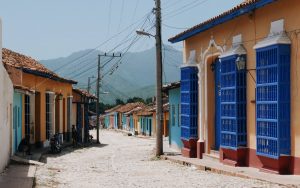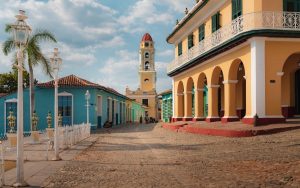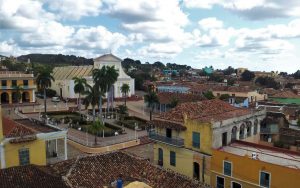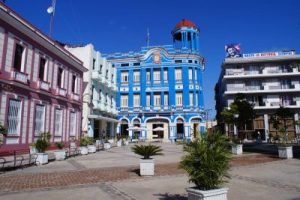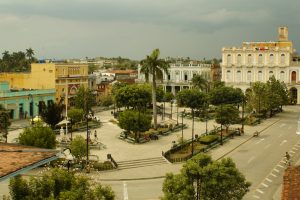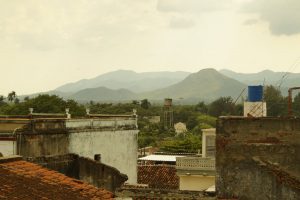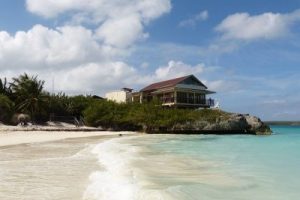Trinidad
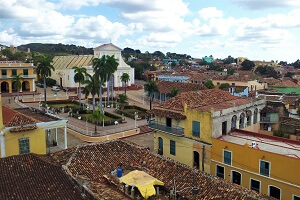
Updated: Dec 19, 2022
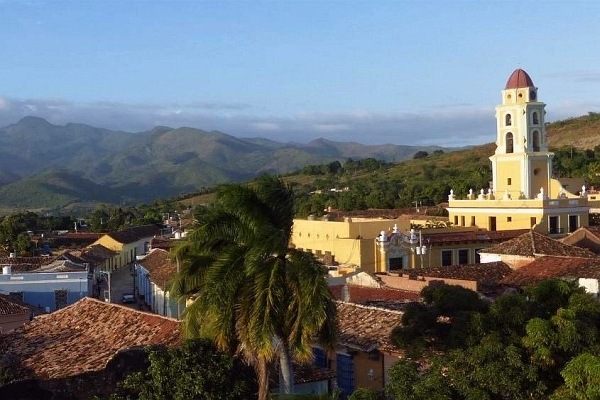
Updated: Dec 19, 2022
Between the Caribbean Sea and the mountains of the Sierra del Escambray lies Trinidad, a small town, with one of the most well-preserved colonial old towns in the world. In the surroundings of the city there is also the historic Valley of the Sugar Mills. These cultural sites, recognized as UNESCO World Heritage Sites, make Trinidad one of the most important sights in Cuba
Nestled in the foothills of a tropical mountain landscape just a few kilometers from the southern coast of the province of Sancti Spíritus lies the Trinidad.
The small town is not only one of the oldest, but also one of the most beautiful cities in Cuba. Like hardly any other place, Trinidad is firmly in the hands of tourists at daytime. Most of the visitors arrive around noon and leave until late afternoon, when the buses are on their way back to the hotels in Varadero, peace returns to the small town, because only a few travelers stay overnight.
An overnight stay in the beautiful town is a good idea. In the region you can not only visit one of the most beautiful beaches in Cuba, Playa Ancon, but you can also make excursions into the mountainous landscape of the Sierra del Escambray, which has a number of wonderful natural beauties to offer. The most important sights are the historic city center and the Valley of the Sugar Mills, which is also a UNESCO World Heritage Site.
However, if you only want to visit Trinidad and the Valley of the Sugar Mills, you can get by with just one overnight stay. If, on the other hand, you plan to explore the exciting surrounding area in more detail, it can be worthwhile to stay in the region for several nights.
History & Development
Trinidad looks back on over five centuries of history. In the 16th and 17th centuries, the city was initially an important trading center for slaves. A century later, it was mainly the sugar produced in abundance in the fertile region that helped the city to great prosperity. Relics of this brilliant era are a multitude of stately colonial buildings in the center of town. The Valley of the Sugar Mills, located in the nearby Trinidadian countryside, is witness to the cultivation of the important sugar. Both the historic town center and the Sugar Mill Valley have been World Heritage Sites since 1988.
With the end of slavery and the sugar boom, the city sank into insignificance for a long time. Nearby Cienfuegos developed into the new economic and cultural center of the region because of its strategically superior natural harbor. For a long time, Trinidad remained largely isolated from the main Cuban routes. A railroad line was not built until the beginning of the 20th century. A modern road connection even followed as late as during the 1950s. Retrospectively, it is due to this isolation that the unique colonial architecture could be preserved practically without changes. The former backwardness became the basis of the tourist importance. Today, Trinidad is one of the most visited places in Cuba.
It is due to the many wealthy tourists that the town has meanwhile adapted itself strongly to the visitors. Overall, you will not necessarily get an impression of authentic Cuba in the center of Trinidad.
­
Sights
The main sights are located within walking distance of the colonial city center, whose streets, paved with rough cobblestones, are closed to vehicles. In the heart of Trinidad lies the picturesque main square, the Plaza Mayor. Built as early as 1522, the square is surrounded by important historical buildings, including some of the city's most important sights.
If you wander through the labyrinth of tiny streets, you will discover many other attractions. In the old town there are many historic buildings with historical details, such as ornate wrought-iron grilles, decorated verandas and carved balconies. A large part of the buildings have been renovated and shine in fresh pastel colors. Nevertheless, hardly anything has changed over time in the historic center.
The most important sights of Trinidad are presented below. The Valley of the Sugar Mills is discussed in detail in the section on excursions.
Main Sights:
- The center of the historic old town is the Plaza Major. The square invites visitors to linger with its flowerbeds, palm trees and ornate, cast-iron benches. Hardly anything has changed here, the square is since ages surrounded by magnificent buildings.
- The northeast end of the Plaza Mayor is dominated by the Iglesia Parroquial de la Santísima Trinidad, the most important church in Trinidad. It was built towards the end of the 19th century.
- On the southeast side of the Plaza Mayor there is the Palacio de Ortiz, which houses the art gallery Galería de Arte Universal Benito Ortiz. From the balcony on the second floor you can enjoy a wonderful view of the plaza.
Museums
- At the southwest end of the Plaza Mayor you can visit the Archaeological Museum (Museo de Arqueología; 1 USD). In the very same building - called Casa Padron - the owneronce welcomed Alexander von Humboldt in the early 19th century.
- On the left side of the church is the Palcio Brunet. In the magnificent building, the Museo Romantico documents the lifestyle of wealthy Cubans in the 19th century.
- In the Museum of Colonial Architecture (Museo de Arquitectura Colonial) you can get an overview of the development of Trinidad. The museum is located in a mansion built in the second half of the 18th century. The painted and decorated wooden ceiling is beautiful. There is a small garden in the courtyard. Among other things, a luxurious antique shower can be seen. The entrance is 1 USD.
- A stone's throw from the Plaza Mayor lies the Palacio Cantero. The mansion houses the historical museum of Trinidad. The museum displays numerous exhibits from the Cantero family. The highlight is the observation deck of the tower from which you can enjoy a wonderful panoramic view of the city and the countryside. The stairs to the top are very narrow and steep and therefore not suitable for everyone. The entrance fee is 2 USD per person.
- In the Convento de San Francisco de Asis (18th century) a small museum can be visited, which thematizes the fight against counter-revolutionaries retreating in the mountains of the nearby Sierra del Escambray. From the tower, after climbing a good 120 steps, you can enjoy a wonderful panoramic view. You can take great pictures of Trinidad and the whole valley up to the mountains and the sea. The entrance is 2 USD.
­
Valley of the sugar mills
The most visited sight in the Trinidad area is the Valley of the Sugar Mills, known as Valle de los Ingenios. Also, day tourists visit the Valley. If you want less hustle and bustle, it is better to leave early in the morning, to arrive before the excursionists. Most tourists come from Havana or Varadero, and it takes quite a while to get to Trinidad.
In the Valley once more than 2,000 factories were engaged in the refining of sugar cane in the middle of the 19th century. Today, a total of 75 individual historical sites can be visited. Among them are the ruins of various sugar mills, including the associated location houses, machinery and manor houses.
After most of the mills were destroyed during the wars of independence and the Spanish-American War, part of the sugar industry moved to other regions (such as the Matanzas region). However, sugar cane is still cultivated on some fields. In the center of the valley, 16 km northeast of Trinidad, is the small town of Manaca Iznaga.
Attractions
- If you leave Trinidad on the way to the Valley, after about 5 kilometers you will reach the Mirador Loma del Puerto (map), a viewpoint that comes with a small café. From the top of the hill, you can enjoy a fantastic view of the Valley and the mountains of the Sierra del Escambray. On the site, there is also the possibility to float along a canopy cable car over the valley.
- In the village you can visit a seven-story tower, the Torre de Iznaga, that is almost 50 meters high. The tower, built in 1816, served to guard the slaves on the plantations. From the top of the tower you have a beautiful panoramic view over the plantations to the Sierra del Escambray. Three bells hung in the tower: The largest called for work, the middle one signaled breaks, and the smallest announced prayer time. If you want to climb the tower, you have to pay an entrance fee of 1 USD. On the way to the tower, you pass stalls selling handicrafts and embroidered tablecloths.
- At the foot of the tower is the plantation owner's mansion, Casa Iznaga, built around 1800. Inside the building there is a restaurant. In addition, it is possible to visit some rooms where once lived one of the plantation owners, who was one of the richest men in Cuba. In the courtyard, information is provided about the cultivation and processing of sugar cane.
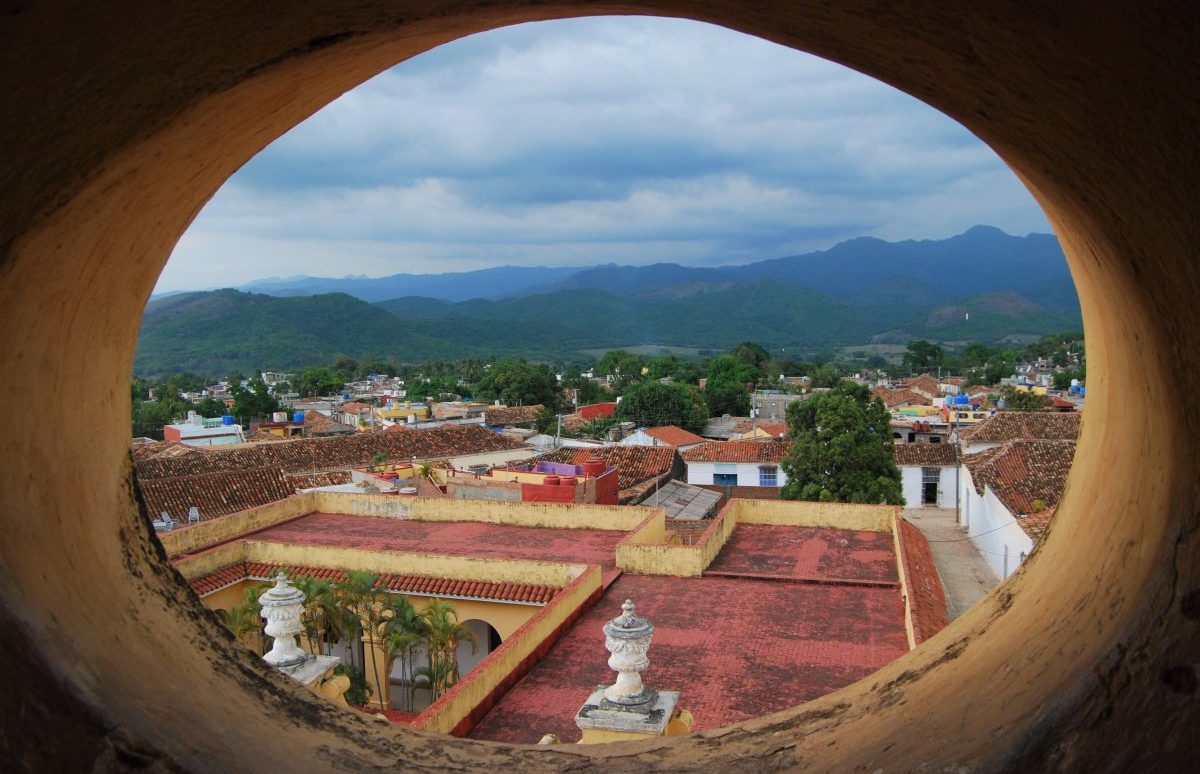
Things to Do
- The Valley can be reached by a vintage steam train (Tren de Vapor), which operates for tourists. The train leaves the station in Trinidad daily at 9:30 a.m. to Manaca Iznaga, which is about 15 kilometers away. At 10:30 a.m. you reach Iznaga, where you make a one-hour stop. After another half-hour ride, you reach Finca Guachinango, and stay for 90 minutes. Shortly before 3pm, you be back in Trinidad. The ride on the historic train is a nice experience. A ticket for a round trip costs 15 USD. There is also a small train that runs as regular service for locals. If you want to try this cheap alternative, ask at the station, if a train is running.
- It is possible to go horseback riding. One tour will take you to the Hoyo del Pilón waterfall, where you can take a refreshing bath. The excursions are offered by a small agency that you can visit in Trinidad.
­
Eat & Drink
Due to the steadily growing number of visitors that Trinidad has been experiencing for several years, there are a large number of restaurants. The establishments have adapted to the needs of vacationers, so that there are hardly any typical Cuban offerings in the city center. Almost all restaurants are well above the typical Cuban standard and so are the prices. The offers are mainly aimed at day tourists and wealthy vacationers. If you stroll through the streets, you will quickly find a suitable restaurant.
Only for backpackers, who try to keep their travel budget together, it will not be easy to get something inexpensive to eat. Because Cuban-typical, simple cafeterias, as they are common in the rest of the country, are hardly to be found in Trinidad.
A small selection of some recommendable places to eat can be found in the following overview.
- The restaurant Plaza Mayor is located in a beautiful historical colonial building, near the nearby square of the same name. There is a choice of sitting inside or on the covered terraces in the green patio. The lunch buffet offers a decent selection. When tour groups arrive music is played often.
- At Sol Ananda restaurant you eat in a stylish colonial mansion, which has been lovingly furnished with antique furniture. The restaurant is located directly on the main square Plaza Mayor. The prices are quite high. For a standard meal you have to calculate with 15 to 20 USD per person.
- In another historic building you will find Restaurante Museo 1514, which commemorates the founding year of the city. The atmosphere here is nice with prices at the upper end of the Cuban scale.
- The Paladar La Nueva Era offers a nice atmosphere and beautiful roof terrace with views over the city. This is a great place to have a drink above the rooftops of the city.
- The Taberna Ochun Yemaya is one of the few more affordable places in Trinidad and is therefore often visited by backpackers. If you want to avoid the expensive restaurants in the center, the taberna may be your best choice.
­
Nightlife
Given the size of the town, the range of options for going at night is quite limited. Besides the almost obligatory Casa de la Musica, Trinidad has a nightclub in an imposing cave, which is known far beyond the city limits.
- The Casa de la Musica is the spot for salsa lovers. In the evening, a transformation into an open-air dance floor takes place. Bands perform and people dance outdoors. Tourists make up the majority of the guests. The prices of drinks are moderate, as everywhere in Cuba, beer 1.5 USD. The entrance fee is 1 USD.
- Quite a few steps down, and you enter a large underground cave. The location is impressive and highlighted by successful colored lighting. Here, strangers mingle with sociable locals. The way is a bit arduous, you have to walk up a hill (map). Especially on the way back - after a drink or two - you should pay extra attention. Better wear sturdy shoes, also in the cave it can be slippery, it drips from the ceiling. At the entrance you have to expect some waiting time, it often gets very crowded. Admission 5 USD incl. a drink. The Caves opens around 11 am.
­
Beach: Playa Ancón
About 10 kilometers south of Trinidad lies the Playa Ancón (map). The beach runs along the Ancon Peninsula and is definitely one of the most beautiful in Cuba, perfect for relaxing and swimming in the Caribbean Sea. Sunbeds and umbrellas can be rented at the beach for about two USD per person.

Playa Ancon
The restaurant Grill Caribe , located on the small Playa Maria Aguilar serve simple meals, that you can take with a beautiful view of the sea. For a long day at the beach, you should better take the most necessary snacks and drinks with you.
For 10 USD you can take a one-hour boat trip to a coral reef for snorkeling (equipment included). Details about the snorkeling excursion and other offers on and under the water can be found in the following section on the marina.
If you want to snorkel, you can also do so halfway between Ancón and La Boca. In a small rental (map) equipment can be lent for a few USD. With a bit of luck, you can also get a fresh lobster at a reasonable price that is served in a simple beach restaurant.
If you come by rental car, you can park in a guarded parking lot for one USD. If you want to go to the beach without your own vehicle, it is possible to reach the beach by cab from Trinidad. Drivers are waiting at Plaza Carillo. For a one-way trip in a vintage car you have to calculate about 5 to 10 USD, depending on your negotiating skills. With 2 USD per person and ride, the shared cab (cab colectivo) is cheaper. Alternatively, you can also get to the beach by sightseeing bus, where a day ticket costs 5 USD.
­
Marina Ancón
Not far from the beach lies Trinidad's small yacht harbor, named Marina Barlobento, which includes a small diving center. The marina offers a variety of activities both on and under the water.
Activities above the water
- Ten kilometers south of the coast of Trinidad lies the small Cayo Blanco, which should not be confused with the same named one near Vardero. To visit the cayo, a full-day excursion is offered. The transfer to the island takes about 45 minutes. Those who wish can snorkel in a reef from the boat or are dropped off directly on the island. The beach at the island is beautiful. On the island there are a lot of hand-toothed iguanas. Departure is in the morning (9:30), the returning to Trinidad is around 5 pm. Hotel transfers are provided. The price of the excursion is 50 USD per person. Included are free drinks and a buffet lunch served in a small restaurant on the island.
- If you want, you can do a cruise around the Casilda Bay, along the coast of the peninsula. Among other things, there is a mangrove to observe. In addition, there will be a break for snorkeling. The equipment is included. The excursion lasts about two hours and is offered several times a day, whenever six people can be arranged. The price is 20 USD per person.
­
Transport
The modest Viazul bus station is located within walking distance of Trinidad's city center. Viazul buses run twice a day to Havana and Varadero, and once daily there is also a connection to the east of the island.
Some inter-regional shared cabs also depart from the bus station. But most regional shared cabs, for example to the beach, leave from Plaza Carrillo. At the Square is also the meeting point for available cab drivers, so, if you are in need of a ride, you can just go there and ask.
There is also a tourist bus that connects the city center with the very beautiful Playa Ancon. The daily ticket for the bus costs 5 US dollars.
Backpackers can try to get a ride to Varadero or Havana on one of the day-guests' buses. The buses leave the city in the early afternoon. If you want a ride, speak directly to the drivers, which usually wait at or near the vehicles.
There is a small train station in the south of the city. The only trains that run there are connecting the city with the Valley of the Sugar Mills.
­
Accommodation
When you plan to stay overnight, you have the choice between accommodation on the beach or in the city. If you want to stay in Trinidad, you should try to find accommodation near the historic city center. If you prefer to accommodate close to the beach, it is advisable to book a hotel. While there are also hotels at the center, due to many restaurants (and stores) a home-stay may be a good option.
Let´s take a closer look to the best accommodations in Trinidad:
Top Hotels (€€€)
- The 5+ star Iberostrar Grand Trinidad is the best hotel in the city. The magnificent colonial building has a beautiful courtyard and is located in the best location of the town.
Mid-Range (€€)
- The Hotel Club Amigo Ancón is located in the direct vicinity of the mentioned but much more expensive Memories Trinidad del Mar. The state-owned Club Amigo is a simple all-inclusive hotel with moderate prices. If you can handle a very simple hotel, you can stay here at a reasonable price.
Budget (€)
- The Hotel Club Amigo Ancón is located in the direct vicinity of the mentioned but much more expensive Memories Trinidad del Mar. The state-owned Club Amigo is a simple all-inclusive hotel with moderate prices. If you can handle a very simple hotel, you can stay here at a reasonable price.
Hotels at the beach ()
Top Hotels (€€€)
- The 4-star hotel Memories Trinidad del Mar is located directly at the beautiful Playa Ancon. The large complex offers all-inclusive accommodation. The driving time to downtown Trinidad is about 10 minutes. In addition, there is an outdoor pool, Wi-Fi, and free parking.
Mid-Range (€€)
- The Hotel Club Amigo Costa Sur is a simple 3-star hotel. It is located about 2 km of the other two hotel complexes at the beach. The beach section of the Costa Sur is quiete narrower and the water slopes very shallow, so swimming directly from the beach is limited. On the other hand, the beach is ideal for children, who can splash around in a kind of natural pool, protected by the breakwaters. The hotel can be a alternative to the more expensive Hotel Memories Trinidad del Mar or the very basic Amigo Ancón (see below).
Budget (€)
- The Hotel Club Amigo Ancón is located in the direct vicinity of the mentioned but much more expensive Memories Trinidad del Mar. The state-owned Club Amigo is a simple all-inclusive hotel with moderate prices. If you can handle a very simple hotel, you can stay here at a reasonable price.
­
Excursions
From Trinidad, you can undertake a number of interesting excursions.
- Relaxation can be found in the 800-meter-high mountains of the Sierra del Escambray, where two national parks can be explored. In the tropical mountains, visitors have the opportunity to go on beautiful hikes. In addition, various viewpoints with breathtaking panoramic views and great waterfalls can be visited.
- Not far from the city center is a small nature reserve called El Cubano. The park is located around 5 km northeast of Trinidad and has a hiking trail, that leads first over a small hanging jetty and afterwards along a creek through a dense tropical forest. There is a path from the restaurant El Cubano up the hill for about a kilometer to a natural pool in which you can take a wonderful swim. From Trinidad there are also guided horseback rides to the small park.
